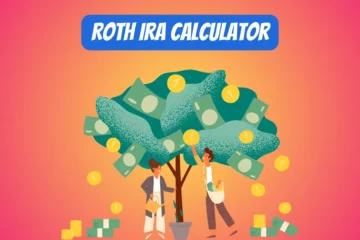Table of Contents
How to use this Simple Interest Calculator
- Principal Amount: Enter the principal amount in the corresponding input field.
- Interest Rate: Input the interest rate you are expecting (in percentage) in the next field.
- Time: Enter the time period for which the money will be borrowed or invested. You can choose the time unit as either “Years” or “Months” from the dropdown next to the input field.
- Calculate: Click on the “Calculate” button to find out the Simple Interest and Total Amount you’ll need to pay back or will receive.
- Reset (Optional): If you want to clear all fields and start over, click the “Reset” button.
- Copy Results (Optional): Once you’ve calculated the Simple Interest and Total Amount, a “Copy” button appears. Click on it to copy the calculated amounts to the clipboard.
Simple Interest: What It Is and How to Calculate It
What Is Simple Interest?
Imagine you lend $100 to a friend, and they promise to give you some extra money as a thank-you for letting them borrow the cash. That extra money is what we call “interest.” But simple interest is, well, simpler! It’s the most straightforward way of calculating how much “extra” you’ll get back or owe.
Why Is Simple Interest Important?
Simple interest is like the building block of all interest calculations. It’s used in savings accounts, loans, and various investments. Understanding how it works can save (or make) you money in the long run!
How to Calculate Simple Interest?
Simple Interest = (Principal × Rate × Time) / 100
Breaking Down the Formula
- Principal: This is the initial amount of money.
- Rate: The interest rate, usually annual, in percentage.
- Time: The time period the money is borrowed or invested for, generally in years.
Example:
Say you invest $1,000 at an annual interest rate of 5% for 2 years.
Simple Interest = (1000 × 5 × 2) / 100 = 100
So, you’ll earn $100 in interest.
Common Mistakes to Avoid
- Not converting time or rate units: Make sure they align for accurate calculations.
- Ignoring compound interest: Simple interest doesn’t compound, but not all scenarios use simple interest, so be cautious.
Practical Applications of Simple Interest
- Personal Loans: When you borrow money, sometimes the interest on the loan is calculated using simple interest, particularly for short-term loans.
- Car Loans: Many auto loans use simple interest to calculate the interest due over the life of the loan, making it crucial to understand how much you’ll end up paying.
- Savings Accounts: Some basic savings accounts use simple interest to determine the annual interest you’ll earn on the money you’ve deposited.
- Certificates of Deposit (CD): Simple interest is often used in Certificates of Deposit. You deposit a lump sum amount for a fixed period, and interest is calculated using simple interest.
- Retail Instalment Plans: When you buy a product and opt to pay in installments, the added cost is sometimes calculated using simple interest.
- Student Loans: Though federal student loans often use compound interest, some private lenders might use simple interest, especially for short-term or bridge loans.
- Bonds and Treasury Bills: Many government-issued bonds and treasury bills use simple interest. You buy the bond for a fixed period and earn interest at maturity.
- Business and Vendor Loans: Small businesses may prefer simple interest when they need a loan for a short period, making it easier to calculate the cost of borrowing.
- Lease Agreements: Some lease contracts, like equipment or car leases, may use simple interest to calculate the financial charges over the term of the lease.
- Credit Cards with Introductory Rates: Some credit cards offer a simple interest rate for a promotional period, after which it switches to compound interest.
- Small Investments: For small, short-term investments, simple interest can be an easier and more straightforward option to understand how much you’ll earn.
- Agricultural Loans: Farmers often opt for short-term loans with simple interest when they need funds for sowing or harvesting crops.
Wrapping Up
Understanding simple interest is like learning your ABCs in the financial world. It’s not just textbook stuff; it’s real-world applicable. So the next time you’re lending money, investing, or even opening a new savings account, you’ll know precisely how that interest works.
Enjoyed this? Explore our other economics tools.








